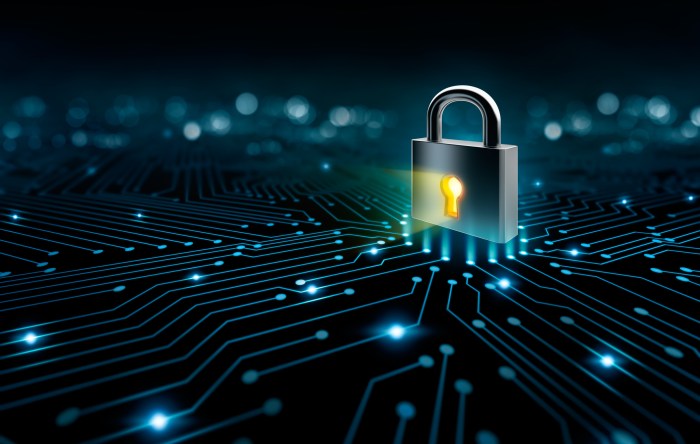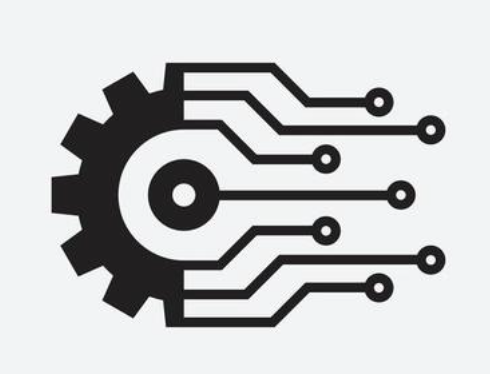Cybersecurity is a critical aspect of our digital lives, safeguarding individuals and organizations from the ever-growing threat of cyberattacks. As technology advances and our reliance on the internet intensifies, the landscape of cyber threats continues to evolve, demanding sophisticated measures to protect our sensitive information and systems.
From malicious software to phishing scams and ransomware attacks, the methods employed by cybercriminals are becoming increasingly sophisticated. Understanding the different types of cyber threats, their motives, and the vulnerabilities they exploit is crucial for developing effective defense strategies.
Types of Cyber Threats

Cyber threats are a constant and evolving danger in the digital world. Understanding the different types of cyber threats and the motives behind them is crucial for individuals and organizations to effectively protect themselves.
Malware
Malware, short for malicious software, is any software designed to disrupt computer operations, gather sensitive information, or gain unauthorized access to a system.
- Viruses: These programs replicate themselves and spread to other files, often causing damage to the infected system.
- Worms: Self-replicating programs that spread across networks, often exploiting vulnerabilities in operating systems or applications.
- Trojan Horses: Malicious programs disguised as legitimate software, often used to steal data or gain control of a system.
- Spyware: Programs that secretly monitor and collect user data, such as browsing history, keystrokes, and personal information.
- Ransomware: Malicious software that encrypts a victim’s files and demands payment for decryption.
Attackers use malware to gain unauthorized access to systems, steal data, disrupt operations, or extort money from victims. They often exploit vulnerabilities in software or operating systems to spread malware.
Phishing
Phishing is a type of social engineering attack that aims to trick users into revealing sensitive information, such as passwords, credit card details, or bank account information.
- Email Phishing: Attackers send emails that appear to be from legitimate sources, such as banks, online retailers, or government agencies, to lure users into clicking malicious links or providing sensitive information.
- Smishing: Similar to email phishing, but attackers use text messages to deceive users.
- Vishing: Attackers use phone calls to impersonate legitimate organizations and trick users into providing sensitive information.
The motives behind phishing attacks are to steal personal information, financial data, or gain access to accounts. Attackers often use social engineering tactics, such as creating a sense of urgency or trust, to manipulate victims into revealing sensitive information.
Ransomware
Ransomware is a type of malware that encrypts a victim’s files and demands payment for decryption.
- Crypto-Ransomware: This type of ransomware uses strong encryption algorithms to encrypt files, making them inaccessible without the decryption key.
- Locker Ransomware: This type of ransomware locks the victim out of their device, preventing them from accessing their files or operating system.
The motive behind ransomware attacks is to extort money from victims. Attackers often threaten to release stolen data or delete the encrypted files if the ransom is not paid. They use various methods to spread ransomware, including phishing emails, malicious websites, and exploit kits.
Denial-of-Service Attacks, Cybersecurity
Denial-of-service (DoS) attacks aim to disrupt the availability of a service or website by overwhelming the target system with traffic.
- Distributed Denial-of-Service (DDoS) Attacks: These attacks involve multiple compromised systems, known as a botnet, to flood the target system with traffic.
The motive behind DoS attacks is to disrupt the operations of a website or service, often to cause financial damage, disrupt business operations, or make a political statement. Attackers can use various methods to launch DoS attacks, including SYN floods, UDP floods, and HTTP floods.
Best Practices for Cybersecurity
Cybersecurity is a shared responsibility, and everyone has a role to play in protecting themselves and their organizations from cyber threats. This section Artikels best practices for individuals and organizations to enhance their cybersecurity posture.
Strong Passwords and Multi-Factor Authentication
Creating strong passwords and enabling multi-factor authentication are fundamental steps to enhance online security.
- Strong Passwords: A strong password should be at least 12 characters long, contain a mix of uppercase and lowercase letters, numbers, and symbols, and avoid using personal information.
- Multi-Factor Authentication (MFA): MFA adds an extra layer of security by requiring users to provide two or more forms of identification before granting access to an account.
Examples of MFA include using a unique code generated by a mobile app or receiving a one-time password via SMS or email.
Regular Security Updates and Software Patches
Software vulnerabilities are constantly being discovered and exploited by cybercriminals. Regular security updates and software patches are crucial to keep systems protected.
- Automatic Updates: Enable automatic updates for operating systems, applications, and software. This ensures that the latest security patches are applied as soon as they are available.
- Patch Management: Organizations should implement a robust patch management process to ensure that all systems are patched promptly and consistently.
Cybersecurity in Different Sectors
Cybersecurity is crucial for all sectors, but the specific challenges and requirements vary significantly. Each industry faces unique threats and must comply with specific regulations. This section explores the cybersecurity landscape in various sectors, highlighting their vulnerabilities, regulatory frameworks, and successful initiatives.
Healthcare
The healthcare industry faces a unique set of cybersecurity challenges due to the sensitive nature of patient data. Patient health information (PHI) is highly valuable to cybercriminals, who can use it for identity theft, extortion, or even medical fraud.
- Data Breaches:Healthcare organizations are frequently targeted by ransomware attacks, which can disrupt patient care and lead to significant financial losses. For example, in 2021, the ransomware attack on the Colonial Pipeline caused a major disruption in fuel supply across the Eastern United States.
- Compliance Requirements:The Health Insurance Portability and Accountability Act (HIPAA) sets strict standards for protecting patient data. Healthcare organizations must implement robust security measures to comply with HIPAA regulations, including encryption, access control, and regular security audits.
- Examples of Successful Initiatives:Many healthcare organizations have implemented successful cybersecurity initiatives. For instance, the University of Pittsburgh Medical Center (UPMC) has invested heavily in cybersecurity, establishing a dedicated security operations center (SOC) to monitor and respond to threats.
Finance
The financial sector is another industry highly vulnerable to cyberattacks. Cybercriminals target financial institutions to steal money, disrupt operations, and compromise sensitive financial data.
- Financial Fraud:Cybercriminals use phishing scams, malware, and other tactics to steal financial information from individuals and businesses. For example, the Equifax data breach in 2017 compromised the personal data of millions of consumers.
- Compliance Requirements:The financial sector is subject to stringent regulations, such as the Gramm-Leach-Bliley Act (GLBA) and the Payment Card Industry Data Security Standard (PCI DSS), which mandate specific cybersecurity measures.
- Examples of Successful Initiatives:Financial institutions have adopted various cybersecurity measures to mitigate risks. For instance, Bank of America has implemented a multi-layered security approach, including advanced threat detection and response capabilities.
Government
Government agencies are increasingly targeted by cyberattacks, which can compromise national security, disrupt critical infrastructure, and erode public trust.
- Espionage and Sabotage:Government agencies are often targeted by nation-state actors who seek to steal sensitive information or disrupt critical operations. For example, the SolarWinds hack in 2020 compromised the systems of multiple government agencies.
- Compliance Requirements:Government agencies are subject to various cybersecurity regulations, including the Federal Information Security Management Act (FISMA) and the Cybersecurity and Infrastructure Security Agency (CISA) guidelines.
- Examples of Successful Initiatives:The U.S. Department of Homeland Security (DHS) has implemented numerous cybersecurity initiatives, including the National Cybersecurity and Communications Integration Center (NCCIC), which serves as a central hub for cybersecurity information sharing and incident response.
The Future of Cybersecurity

The field of cybersecurity is constantly evolving, driven by technological advancements, new attack vectors, and the increasing reliance on digital infrastructure. As we move forward, understanding emerging trends and their implications for cybersecurity is crucial for individuals and organizations alike.
This section explores some of the key trends shaping the future of cybersecurity and their potential impact on the digital landscape.
The Rise of Artificial Intelligence (AI) in Cybersecurity
AI is revolutionizing various industries, and cybersecurity is no exception. AI-powered tools and techniques are increasingly being employed to enhance threat detection, prevention, and response. AI can analyze vast amounts of data to identify patterns and anomalies that may indicate malicious activity.
This enables quicker and more accurate detection of cyber threats, allowing for faster response times. AI-powered security solutions can also automate tasks like threat hunting, vulnerability assessment, and incident response, freeing up security professionals to focus on more strategic initiatives.Here are some examples of how AI is being used in cybersecurity:
- Threat Intelligence:AI algorithms can analyze data from various sources, including threat feeds, social media, and dark web forums, to identify emerging threats and predict future attacks. This information can be used to proactively strengthen defenses and mitigate risks.
- Anomaly Detection:AI can be used to monitor network traffic and user behavior for unusual patterns that may indicate malicious activity. By analyzing deviations from normal activity, AI can help identify and isolate potential threats.
- Automated Incident Response:AI-powered systems can automatically detect and respond to security incidents, such as malware infections or data breaches. This can help minimize the impact of attacks and reduce the time it takes to restore systems.
Blockchain and Cybersecurity
Blockchain technology, known for its secure and transparent nature, is gaining traction in cybersecurity. Blockchain’s decentralized and immutable ledger can enhance data security and protect against unauthorized access.
- Data Integrity and Tamper-Proofing:Blockchain can be used to create a secure and immutable record of data, making it difficult to alter or tamper with. This can be particularly useful for sensitive information, such as medical records or financial transactions.
- Identity Management:Blockchain can be used to create secure and verifiable digital identities, reducing the risk of identity theft and fraud. This can be beneficial for online transactions, authentication, and access control.
- Secure Communication:Blockchain can be used to encrypt and secure communications, making it more difficult for attackers to intercept or eavesdrop on sensitive data.
The Future of Cybersecurity: Predictions and Implications
The future of cybersecurity will likely be characterized by a dynamic interplay between evolving threats and innovative defenses.
- Increased Sophistication of Cyberattacks:As technology advances, cyberattacks are becoming more sophisticated, utilizing techniques like AI and machine learning to evade traditional security measures. This necessitates the development of advanced security solutions that can keep pace with these evolving threats.
- Rise of Quantum Computing:Quantum computing has the potential to break current encryption algorithms, posing a significant threat to cybersecurity. Organizations need to prepare for this eventuality by exploring quantum-resistant encryption methods and developing strategies to mitigate the risks.
- Greater Emphasis on Cybersecurity Awareness:As cyber threats become more pervasive, it is essential to increase cybersecurity awareness among individuals and organizations. This includes educating users about best practices for online safety, promoting responsible use of technology, and fostering a culture of security.
Summary
In an increasingly interconnected world, cybersecurity is no longer a niche concern but a fundamental necessity. By implementing robust security measures, staying informed about emerging threats, and embracing best practices, individuals and organizations can significantly reduce their vulnerability to cyberattacks.
The future of cybersecurity holds exciting possibilities with advancements in artificial intelligence and blockchain technology, promising even more effective defenses against evolving threats.
Helpful Answers
What are some common cybersecurity threats?
Common cybersecurity threats include malware, phishing, ransomware, denial-of-service attacks, and social engineering.
How can I protect myself from cyberattacks?
You can protect yourself by using strong passwords, enabling multi-factor authentication, keeping your software updated, being cautious of suspicious emails and links, and avoiding public Wi-Fi for sensitive activities.
What is the role of cybersecurity in the modern world?
Cybersecurity plays a crucial role in protecting our personal information, financial data, critical infrastructure, and national security. It ensures the reliability and integrity of our digital systems and services.
